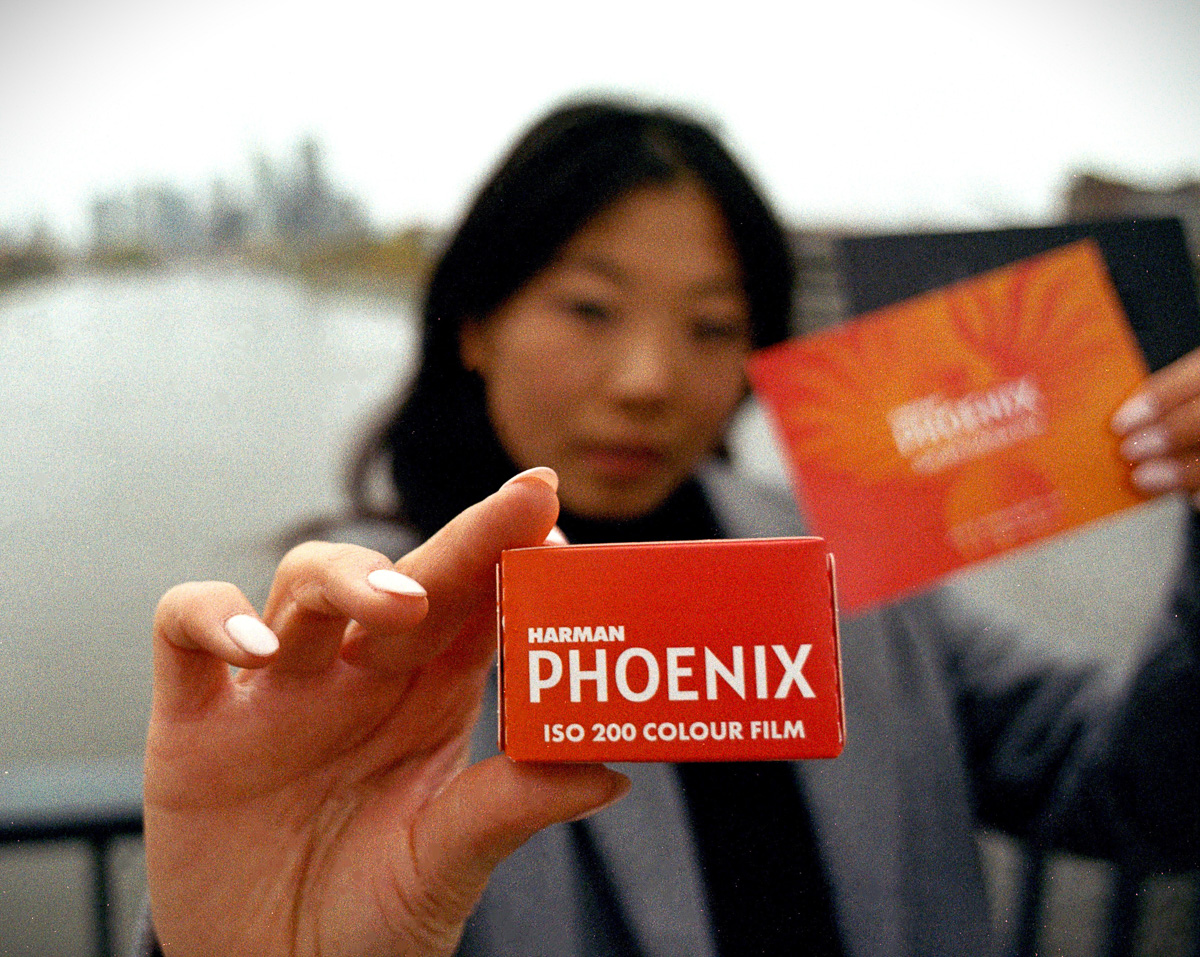HARMAN Phoenix, a New Color Film Tested!
By Marwan El Mozayen

I was one of the lucky people who recently received a small package from Harman Technology/Ilford Photo, a package which contained two precious pre-release rolls of HARMAN Phoenix 200. This, according to head of marketing Matt Parry, is the very first color emulsion ever produced at the Ilford factory in Mobberley, England. (For those who remember 1960’s Ilfocolor, this was not coated on their premises.)
The term “branching out” can hardly be applied to the leap which must be made to go from coating black and white film to color film. It is one of the most complex technical processes in modern industry. To quote one film chemist, “Coating color film is literally more complex than rocket science!”.
Although I like and trust Matt, I wondered if this could be some PR hype to promote a film which is being offered by other companies under different names. But one look at the film leader reassured me. It looked completely different than any other color film I’ve seen: a bit green-ish, and quite thin.
Matt gave me the background of its development. “Our directors came with a really surprising request — produce a totally new color emulsion. Think out of the box. They didn’t care exactly what came out, ASA 25, whatever, just make something new.” With this in mind, the company decided against headhunting experienced film chemists. They have instead utilized the younger members of an expanding R&D team to support their more experienced scientists. Fortunately, the equipment in Mobberley is quite good, and their team had experience with a monochrome color film, XP2, which is developed in C-41 chemistry. They weren’t starting from zero — but it was still quite a hill to climb.
With this background in mind, I wasn’t surprised when Matt told me that Phoenix should be thought of as an experimental film. “We aren’t aspiring to Kodak’s professional films with Phoenix,” he said bluntly. “But we’ve been really surprised by how much we could achieve with this first emulsion! We have gotten a real ASA 200 film, not a 25 which we label 200.”
After speaking to Matt, I was very excited to test the film although I only had two rolls, and not much time before our deadline for Issue 21 of SilvergrainClassics print journal. This would be “kicking the tires” and taking the film for a spin. Matt told me not to be surprised if the negative looked a bit “purple-ish,” which didn’t surprise me from what I’d seen on the leader.

The results are reported in detail in the magazine, along with high-quality reproductions of the test photos I made. But for those of you who just can’t wait to get your copy, here’s the short version.
Phoenix is a fairly grainy film which doesn’t reproduce true blacks particularly well. But for portraits and still life images, the film performs very well! It has a very pleasant character which reminds me of color films of the early ‘70s — a dreamy quality. It also works well with color contrasts that pop.
But apart from the results, what I love about this film is that it is another step towards preserving a critical knowledge base. Human skills are involved in color film production; it is as much an art as a science. And the signs are that Harman plans to continue in this direction. Phoenix will be available internationally, and Harman has plans to do multiple coatings, letting it evolve and eventually be replaced.

But Harman Phoenix is not the only new color film I tested and reported about in SilvergrainClassics’s Issue 21 — there is also, somewhat confusingly, a new Ilfocolor film which belongs to a completely different company, Ilford Imaging Europe. And as if those two weren’t confusing enough, there is also the Wolfen (not ORWO) NC500!
But no matter which company is coating new color emulsions, we are grateful for it. Companies like Harman, Ferrania, and ADOX are joining Kodak, bringing a wider variety of truly new color film stocks to the market. This investment in the future of film benefits all of us and will help keep film alive and thriving.

These online articles are free – we see it as our contribution to the film photography community. You can support this content by subscribing to our awesome print magazine about the entire world of analog photography!
https://shop.silvergrainclassics.com/subscriptions/

